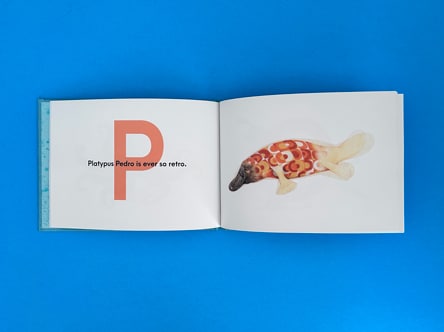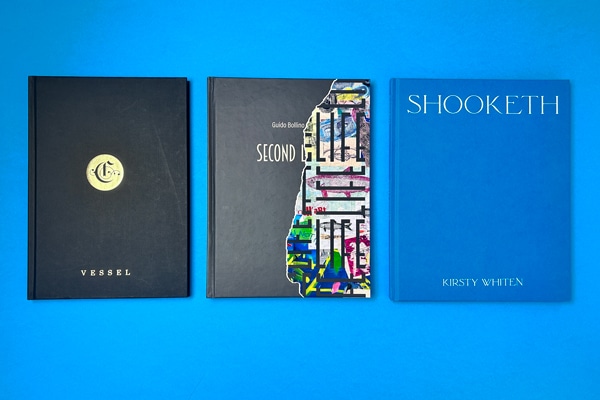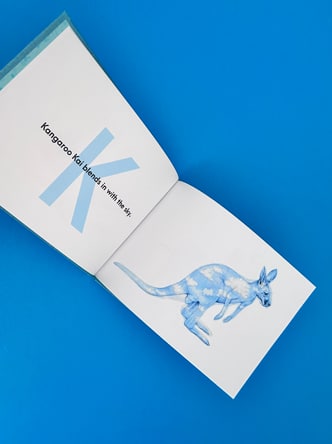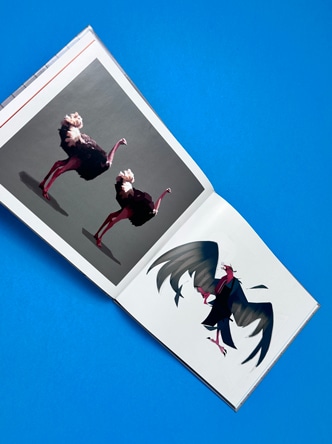One-Off Hardback Book Printing UK: Top Services for You


Hardback book printing is the process of creating books with a sturdier and more durable cover than paperback books. Hardback books, also known as hardcover books, are bound with a hard outer cover, typically made of thick cardboard or cloth. This type of book printing is often preferred for its higher quality and longevity. The hardcover protects the pages from wear and tear, making hardback books a great option for books that are meant to be read and preserved for years to come. Additionally, hardback book printing allows for customisation in terms of size, cover design, and printing process, ensuring that each book is unique and meets the author’s or publisher’s specific requirements.
What are the Benefits of One-Off Hardback Book Printing?
When it comes to book printing, one-off hardback book printing offers several benefits that cannot be overlooked.
First and foremost, durability. Hardcover books are known for their ability to withstand the test of time. The hardcover provides extra protection to the book, making it less prone to wear and tear, ensuring that the book will last longer compared to its paperback counterpart.
In terms of appearance, hardcovers exude a more professional and sophisticated look. With the option to customize the size and cover style, hardbacks can be tailored to suit any author’s vision, creating a unique and eye-catching design that stands out on bookshelves.
From a financial perspective, there are higher profit margins to be gained with one-off hardback book printing. Although the production costs may be higher compared to paperbacks, the higher unit cost can be offset by the price point at which hardcovers are sold. Additionally, releasing a hardcover edition before the paperback can lead to higher sales and profits.

Furthermore, hardcover books have a collectible value that paperback books often lack. Collectors value the sturdiness and longevity of hardbacks, making them more desirable for book enthusiasts. Printing a limited edition number of books also adds to their appeal.
In conclusion, the benefits of one-off hardback book printing are numerous – durability, professional appearance, higher profit margins, and collectible value. These factors make hardcovers an attractive option for both authors and readers alike.
Types of Hard Back Cover Books
Hardback books come in various types, each offering unique features and benefits. One type is the custom size hardback, which allows authors to have full control over the dimensions of their book. This is particularly useful for books that require a specific trim size or layout. Another type is the cased book, which refers to hardbacks that have a fabric or leather cover, giving them an elegant and luxurious feel. Additionally, there are limited edition hardbacks, which are produced in a small quantity, making them highly prized by collectors. These editions often feature special artwork or additional content that is exclusive to the limited run. Lastly, there are art and coffee table hardbacks, which are known for their larger sizes and high-quality printing. These books showcase stunning visuals, making them ideal for displaying on coffee tables or as decorative pieces. Overall, the different types of hardback books offer authors and readers a wide range of choices to suit their preferences and needs.

Paperback, Yearbooks, Dissertations
Paperback books have long been a popular choice among readers due to their affordability and portability. However, they do come with a few drawbacks that can impact both publishers and authors. One of the main disadvantages of paperback books is their susceptibility to damage. The card covers of paperback books make them more prone to wear and tear, reducing their longevity. This can be a significant concern for publishers who want their books to withstand multiple reads and last for years.
Furthermore, the competitive nature of the paperback book market often leads to lower profit margins. Paperbacks are usually priced lower than hardcover books, which can make it challenging for publishers and authors to generate substantial revenue. The cost of production for paperback books is also higher than that of hardcovers due to the need for specialised equipment to create the card covers.
If you need a one-off hardback book for a student hand-in, we’ve got you. We have no minimum order quality so do just order the exact number of copies you need.
In conclusion, while paperback books offer affordability and convenience, their cons include higher vulnerability to damage and lower profit margins. Publishers and authors should carefully weigh these factors when considering the styling of their book.

Designing Hardcover Book Artwork
Hardcover books offer a range of features and benefits that set them apart from their paperback counterparts. Firstly, the durable and sturdy hardcover binding provides long-lasting protection for the pages within, ensuring that the book remains intact for years to come. This makes hardcover books ideal for treasured keepsakes, collectible editions, and special gifts.
In terms of aesthetics, hardcover books have a certain elegance and sophistication that paperback books may lack. The hardcover casing can be customised with various materials, finishes, and printing techniques, allowing for a more premium and personalised look. Hardcover books are often favoured for coffee table books, art books, and limited edition volumes.
Although hardcover books may be slightly more expensive to produce than paperbacks, their higher price point is often justified by the perceived quality and durability they offer. Hardcover books also tend to have a higher perceived value, which can be advantageous for authors and publishers seeking to command higher sales prices and royalties.

While hardcover books may be heavier than their paperback counterparts, the added weight adds to the perception of value and substance. Additionally, hardcover books are typically produced in shorter print runs, making them ideal for special editions or niche markets. This also means that hardcover books can be printed on demand, reducing the need for storing excess inventory and minimising the risk of unsold copies.
When it comes to shipping costs and production times, hardcover books may incur slightly higher expenses due to their weight and specialised production processes. However, with print-on-demand services like Gelato, printing hardcover books has become more cost-effective and efficient. Gelato offers a range of hardcover options, including photo books and notebooks, allowing individuals and businesses to easily create and customise their own premium hardcover publications.
In summary, hardcover books offer durability, aesthetic appeal, and perceived value, making them an excellent choice for special editions, collector’s items, and premium publications. With the availability of print-on-demand services like Gelato, producing hardcover books has become more accessible and cost-effective for individuals and businesses alike.

Custom Size Books
When it comes to printing custom size books, attention to detail is essential to ensure a perfect fit. One crucial aspect is calculating the dust jacket artwork size. Start by determining the spine width, which is the thickness of the book block. Next, calculate the book block width, which is the width of the pages when the book is closed. The dust jacket artwork size can be calculated by adding the spine width and the book block width.
In addition to the dust jacket artwork size, it’s important to note that custom size book covers are slightly larger than the book block. This allows the cover to properly wrap around the book and provide a sleek and professional finish.
When determining the height of the book cover, add 12mm to the book block height. This extra space ensures that the book cover fully encompasses the pages and provides ample protection.
Printers specializing in custom size books can assist with these calculations and provide expert guidance throughout the printing process. With their expertise and attention to detail, custom size books can be created to meet exact specifications and provide a unique reading experience.
So, whether you’re printing a novel, an art book, or any other publication requiring a custom size, partnering with a professional printer ensures that every aspect, from the dust jacket artwork size to the precise measurements, is handled with care and precision.
Materials Used in Hardback Book Printing
When it comes to hardback book printing, the choice of materials used is crucial in creating a high-quality finished product. From the cover to the paper used for the book block, every element plays a role in enhancing the overall look and feel of the book. Custom size hardback books provide the opportunity to select the perfect combination of materials to suit the author’s vision and the target audience’s expectations. The covers can be made using a range of options, such as hardboard, bookbinding cloth, leather, or even custom-designed materials. Similarly, the paper used for the book block can vary in weight, texture, and finish, ensuring a tailored reading experience. Whether it’s using coated paper for sharper images or opting for the traditional feel of uncoated paper, the choice of materials in hardback book printing is essential for delivering a visually appealing and durable end product.
Here is a short video to show the hardback binding process.
Gloss or Matt Book Covers with Lamination
Book covers play a crucial role in hardback book printing as they serve both a protective and visually appealing function. Not only do they safeguard the pages of the book from wear and tear, but they also provide an opportunity to showcase the book’s content and captivate potential readers.
In the realm of hardback book printing, there are various methods employed to create eye-catching book covers. Specialist printers are often utilised to achieve exceptional print quality and detail. Additionally, techniques like embossing and coloured foil are frequently employed to add texture and enhance the overall appeal of the cover. These methods help create a lasting impression on readers and make the book stand out on bookstore shelves.
With the advent of digital printing, book covers are often printed alongside the pages themselves. This allows for greater efficiency and consistency in the printing process. Once printed, the book covers are encased in plastic or another protective material to ensure durability and longevity.
In conclusion, book covers are an essential component of hardback book printing. They not only protect the book’s content but also add visual appeal and attract potential readers. Utilising different printing methods, such as specialist printers, embossing, and coloured foil, ensures that the book cover is attention-grabbing and aesthetically pleasing. The integration of digital printing has further streamlined the production process, resulting in high-quality and durable book covers.
Book Size and Full Colour Print Quality
When it comes to hardback book printing, there is a wide range of book sizes available to suit different preferences and purposes. Standard sizes such as A4, A5, and 5×8 inches are commonly used for novels, while larger sizes like A3 and 8.5×11 inches are more suitable for textbooks or coffee table books.
In addition to these standard sizes, many printing companies also offer custom-sized options to accommodate unique book projects. Custom-sized books provide authors and publishers with the freedom to create books in specific dimensions that best match their content and design vision.

It’s important to note that the book size refers to the size of the book block, which includes the pages of the book. The covers of the book are slightly larger to allow for wrapping around the book block.
When preparing artwork for custom-sized books, it’s essential to calculate the dimensions accurately. To determine the artwork size, you need to add the width of the spine and three times the width of the book block, then add 28mm for the width. For the height, add 12mm to the book block height.
Choosing the right book size and ensuring high-quality printing are crucial factors in creating a visually appealing and professional-looking hardback book. So, whether you opt for a standard size or a custom-sized option, make sure to select a reputable printing company to achieve outstanding print quality that brings your book to life.
Book Blocks and Sheets of Paper
Book block creation is a crucial step in the process of hardback book printing. It involves assembling the individual sheets of paper to create the core of the book. The type of paper used can vary depending on the desired quality and aesthetic of the final product. Common options include coated paper, uncoated paper, and specialty papers.
Coated paper is a popular choice for book blocks due to its smooth surface, which allows for high-quality printing and vibrant colors. It is often used for books with rich illustrations or detailed images. Uncoated paper, on the other hand, has a more natural and textured feel, making it suitable for books with a more rustic or tactile aesthetic.
End papers and fly leaves also play a crucial role in hardback book printing. End papers are the sheets that connect the book block to the cover, providing strength and stability. They are usually made from a heavier weight paper or cardstock. Fly leaves, on the other hand, are the blank pages found at the beginning and end of the book. They not only protect the book block but also provide an opportunity for additional design elements or author information.
In summary, the creation of book blocks involves carefully selecting the appropriate type of paper to achieve the desired quality and aesthetic. Coated paper options offer high-quality printing with vibrant colors, while uncoated paper provides a more natural and textured feel. Meanwhile, end papers and fly leaves contribute to the overall durability and presentation of the hardback book.
Coated Paper Options
When it comes to hardback book printing, choosing the right coated paper is crucial for achieving high-quality print results. There are several options available, each with its own benefits and characteristics.
Gloss coated paper is the most common choice, known for its smooth and shiny finish. It provides vibrant colours and sharp details, making it ideal for books with rich illustrations or photographs. The glossy surface also lends a professional and polished look to the final product.
Matte coated paper, on the other hand, has a non-reflective finish that gives a more subdued and sophisticated appearance. It is often used for books with a more elegant or literary aesthetic, as it offers a softer and more subdued colour palette. Matte paper also reduces glare, making it easier on the eyes when reading for extended periods.
Satin coated paper is a middle ground between gloss and matte. It offers a slight sheen without the high reflectivity of gloss paper. Satin paper is a versatile choice, suitable for a wide range of book genres and styles.
Selecting the right coated paper for your hardback book printing project is essential to ensure the desired visual impact. Whether you prefer the vibrant shine of gloss, the refined elegance of matte, or the versatile appeal of satin, the choice of coated paper will greatly influence the overall look and feel of your book.
Unit Cost Considerations
When it comes to hardback book printing, considering unit cost is essential for authors and publishers. Unit cost refers to the cost of printing each individual book, and it is calculated based on various factors. One important factor is the page count of the book, as it determines the quantity of paper required for printing.
Additionally, the type of ink used also affects the unit cost. Black ink is typically more cost-effective compared to colour ink. The printing cost calculation takes into account the number of pages printed with colour ink, as it incurs additional expenses.
For example, let’s consider two scenarios: a book with 200 pages printed entirely in black ink and a book with 100 pages printed with 50 pages in colour. The first scenario would have a lower unit cost due to the absence of colour ink usage. In contrast, the second scenario would have a higher unit cost due to the additional cost of printing with colour ink.
By considering the unit cost, authors and publishers can make informed decisions about the printing process, helping them optimise their expenses and ensure cost-effective production.
Printing Processes and Royalty Rates for Hardback Books
When it comes to printing processes for hardback books, there are several factors to consider. The type of ink used, such as black or colour ink, plays a role in determining the unit cost. Black ink is generally more cost-effective compared to colour ink, which incurs additional expenses. The number of pages printed with colour ink also affects the overall printing cost. For authors, royalty rates are an essential consideration. Royalty rates are the percentage of book sales that authors receive as compensation. These rates can vary depending on the publisher and the agreement between the author and the publisher. It’s important for authors to investigate and negotiate royalty rates to ensure they receive fair compensation for their hardback books. By understanding the printing processes and royalty rates, authors can make informed decisions to bring their stories to life in hardback form efficiently and economically.
Black & White Printing Options
When it comes to black and white printing options for hardback book printing, there are several choices available to suit different preferences and budgets.
Definitely take 10 minutes to watch out Battle With Printing Black and White images video guide for an honest insight.
The standard quality black and white printing option provides a cost-effective solution for those looking to print their books in a more economical manner. While it ensures clear and legible text, it is important to avoid high toner coverage to maintain good print quality.
For those seeking a higher level of detail and clarity, the high-quality black and white printing option is an ideal choice. With sharper images and crisp text, this option is perfect for books that require a more professional look.
If you’re looking to add a touch of colour to your book without compromising on the high-quality black and white printing, the mixture of colour and high-quality black and white option is a great choice. This option allows you to incorporate colour elements, such as illustrations or images, while maintaining the overall black and white aesthetic.
Lastly, the full-colour printing option is available for those who wish to fully embrace colourful visuals in their books. This option provides vibrant and eye-catching images, perfect for books that heavily rely on visuals to tell their story.
In conclusion, the black and white printing options for hardback notebook book printing offer a range of choices to cater to different preferences and budgets. Whether you prefer a standard quality or a more high-quality and detailed print, or if you want to incorporate colour elements or go full-colour, there’s an option for everyone.
Binding options for one-off hardback book printing UK
For one-off hardback book printing in the UK, we will always case-bind them. Case-binding is the process of making a hardback book. The pages are either glue bound or for longer print runs on higher budgets, sewn together, and then glued to a hardcover. Both methods create a impressive hardback book.
What is one-off hardback book printing and how does it work in the UK?
One-off hardback book printing refers to the process of printing a single copy or a small quantity of hardcover books. In the UK, there are several services that offer this option, allowing authors and publishers to have their books printed on-demand without the need for large print runs or inventory storage.


